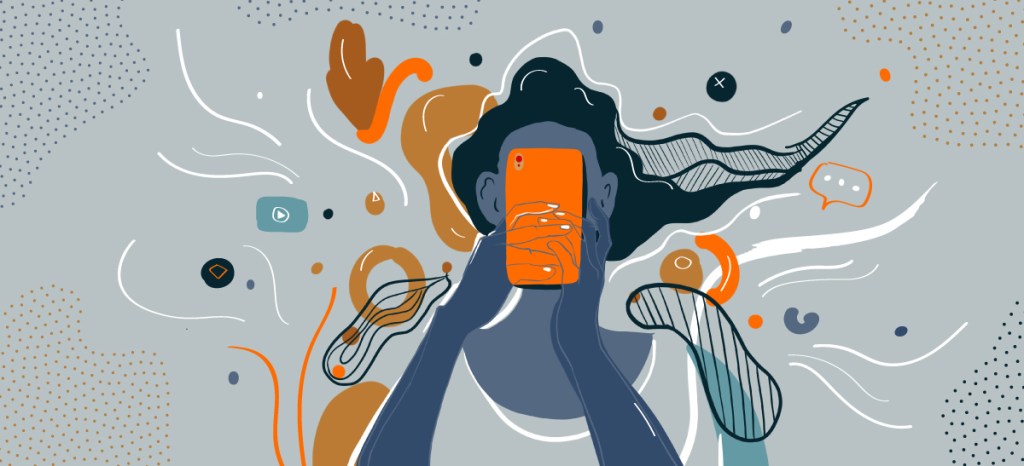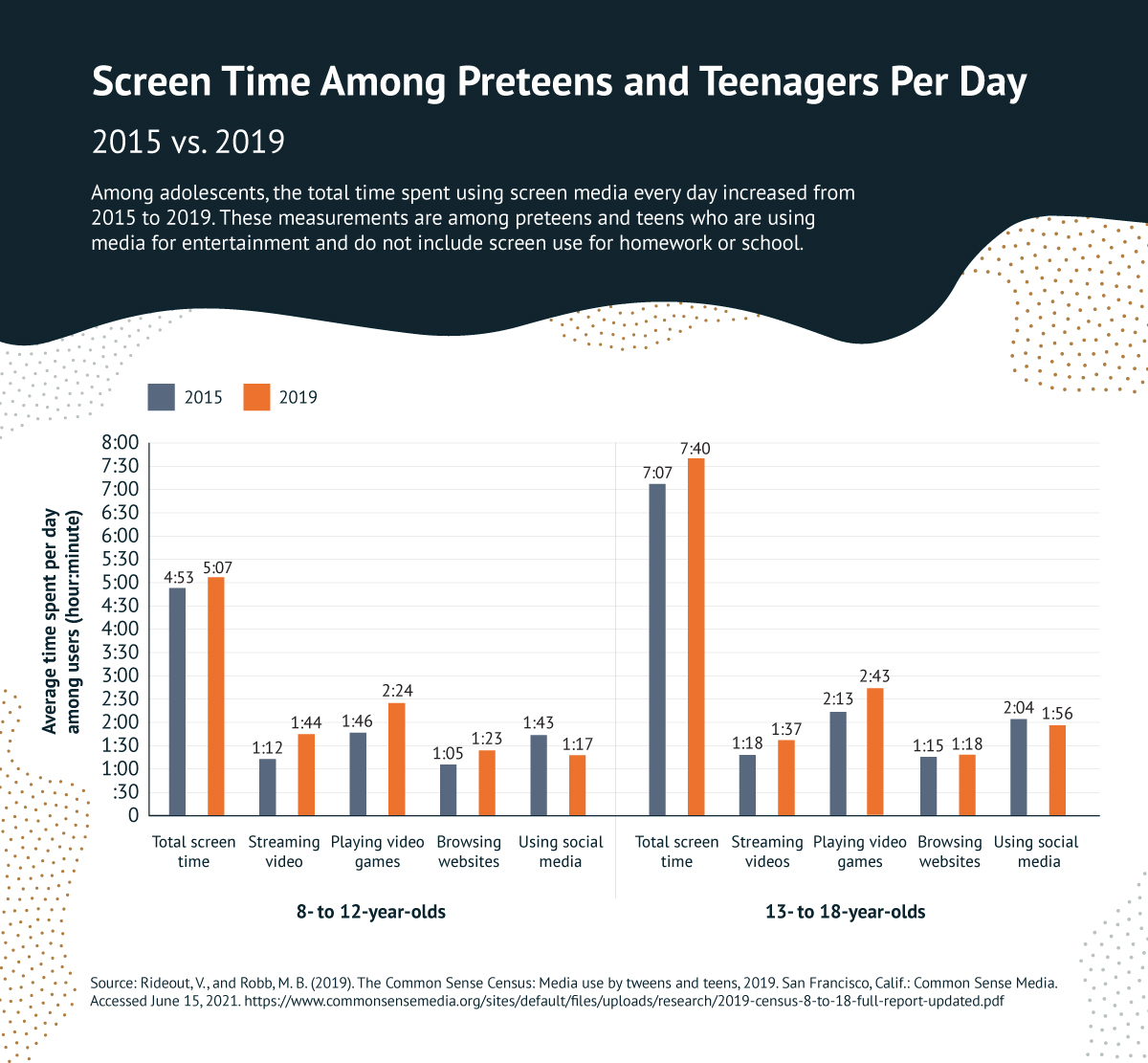How to Do a Digital Detox

Handheld devices like smartphones and tablets can be a portal to virtually anything in the world. That portal is always open, sitting in your pocket as you lounge on the couch or lying on your nightstand as you rest in bed. Eventually, a one-way relationship between user and content can feel as vital and normal as the person-to-person connections we build with others.
Dr. Goali Saedi Bocci, adjunct professor in Pepperdine’s online Master of Arts in Psychology and Master of Arts in Clinical Psychology programs, talks about phones as an access point to the good, the bad, and the ugly. They provide a path to information and connection; they can be catalysts for cyberbullying and loneliness.
Users are constantly prompted to share their thoughts and opinions on the stories of the day, milestones and tragedies that change the direction of their lives, and musings about the odd and hilarious occurrences that happen unexpectedly. Everything has a place on social media, even moments of solitude specifically designed to provide relaxation and reprieve. Who hasn’t seen a bubble bath with candles on Instagram?
While Bocci notes that there is nothing inherently wrong with sharing these moments, it can be important for people to take a step back and reflect when they feel an urge to broadcast.
“It’s learning to control the impulse to share, as we often don’t even think twice about it,” she said.
Screen Time Statistics
The 2019 Common Sense Census: Media Use by Tweens and Teens from Common Sense Media (1.7 MB, PDF) surveys 8- to 18-year-olds in the United States on their media preferences, device usage, and how these things vary according to socioeconomic status.
The Common Sense Census found that time spent using media such as television sets and books has decreased. Meanwhile, the percentage of tweens (ages 8–12) and teens (ages 13–18) who watch online videos every day has more than doubled since 2015.
Percentage of TWEENS who watch online videos every day:
2015:
24%
2019:
56%
Percentage of TEENS who watch online videos every day:
2015
34%
2019
69%
Screen Time by Age

From 2015 to 2019, tweens and teens spent more time using screen media daily. On average, 8- to 12-year-olds and 13- to 18-year-olds spent about 30 minutes and 20 minutes more, respectively, watching online videos. Tweens spent 40 minutes more daily playing video games and 20 minutes more browsing websites every day. Teens spent 30 minutes more playing video games and only three minutes more browsing websites.
Go to tabular data of Screen Time Among Preteens and Teenagers Per Day.
Device ownership among adolescents has also risen, especially among higher income children.
Percentage of TWEENS who own a smartphone:
2015
24%
2019
41%
Percentage of TEENS who own a smartphone:
2015
67%
2019
84%
What Is a Digital Detox?
Detoxification, or “detox,” is often used to describe alcohol or drug cleanses. They are designed as short-term interventions to remove toxins from the body and safely manage withdrawal symptoms, according to the Addiction Center.
Like substance use, technology can become a physical addiction. Internet addiction disorder (IAD) manifests in the brain similarly to alcohol and cocaine substance misuse, according to the Hazelden Betty Ford Foundation.
While a digital detox does not remove a bodily toxin, the premise is similar. According to Bocci, “the gold standard of a [digital] detox is that you’re able to offload as much technology as humanly possible.”
In Bocci’s Digital Detox Card Deck: 56 Practices to Help You Detox, De-Stress, Distract and Discover, she outlines ways to work through this process. They are small, manageable steps that can be incorporated into routines and adjusted for each individual’s needs.
The card deck is sorted into Bocci’s four components of a digital detox:
- “Detox”—removing devices from your life.
- “De-stress”—becoming less reliant on devices as a form of self-care and emotional regulation.
- “Distract”—becoming more mindful about usage instincts and coping skills.
- “Discover”—understanding what life looks like when we step outside ourselves and technology.
Together, these four methods of detox provide a comprehensive set of adjustments to help manage the offloading of technology.
Parents: Are you interested in reducing your child’s screen time? You can adapt the methods below for your family’s needs. Consider engaging in the process with your child to encourage them and share the experience.
What Are the Benefits of a Digital Detox?
Reducing Internet access points can also mitigate the negative consequences of being online. And the effects of screen time on children can be serious—the Department of Health and Human Services reports 15 percent of teens in the United States report experiencing some form of cyberbullying.
Overuse of the Internet and digital devices can also have physical ramifications—too much screen time for children can lead to sleep problems, chronic pain, and depression, according to psychologists at Valleywise Health.
Often, Bocci says, people recognize that removing some technology from their life brings positive change.
“We know what makes us happy, we just don’t do it,” she said. “It isn’t until somebody challenges us or is keeping us accountable that we realize, ‘Wait a minute, these things do make me feel better.’”
What Are the Challenges of a Digital Detox?
Despite the known benefits of distancing oneself from time online, Bocci says there is also a level of stress associated with the idea. Digital connection is a large part of life today, and it may feel scary or even impossible to step away completely.
And just as technology can force individuals to confront feelings of loneliness or perceived inadequacy, it can also be a way to avoid those feelings.
“It can be very existential because it can bring about these feelings of a void in one’s life,” Bocci said.
For some, opening social media apps is second nature during times of boredom or sadness. As Bocci puts it, you start to feel those unhappy emotions and turn to Instagram. But what if Instagram is no longer an option?
“Now I have to sit with my sadness and I have to come to terms with it,” Bocci said. “And that’s the hardest part.”
Before Starting a Digital Detox
Before you begin engaging in a digital detox, consider these questions to help guide the detox process. Solutions are not one-size-fits-all and, like physical detoxes, should be adjusted to accommodate your unique needs and circumstances.
Parents: Consider working through these questions with your child to inform new device management in the home. Their input will make the goals more realistic and give them agency over the process.
What are you getting from your devices?
Do a self-inventory, beginning with why you want to offload technology from your life. What do you wish you had more time for? What is technology taking from you? But also consider the benefits of your devices—what brings you joy? What makes you feel more connected to people?
What is feasible and practical in your life?
Take note of where devices are a necessary part of your routine. If you need your laptop for work or school, unplugging from technology entirely will not be realistic or helpful.
How do you set and stick to your limits?
Consider what holds you accountable. Do you respond to self-imposed deadlines or do you need external support? What kind of limits sound reasonable? An all-or-nothing approach may not be realistic. Try starting out with a single weekend or two detox choices that could make a meaningful difference.
According to Bocci, patience with the process and yourself are vital. She says the negative attitudes people have about themselves can be the most toxic thing of all.
She recommends reminding yourself: “This is a challenging time. I’m going to go gentle and I’m going to go slow and I’m going to do, ultimately, what feeds my spirit and my soul.”
In the long-term, small changes and a positive mindset can have a ripple effect on a person’s relationship with their devices, the Internet, and their outlook.
“It doesn’t have to be this earth-shattering thing, but it really is the small step that can make a huge difference,” Bocci said.
Digital Detox Tips
Unpack your device’s functions.
What does your smartphone do that you can replace? For example, a physical alarm clock can take the place of an app and help keep your phone away from your bedside.
Reduce access points.
Disconnecting from social media entirely may not be feasible or desirable, but you can limit your access to it. For example, you could delete the Twitter app from your phone but keep it available on a desktop computer.
Outsmart the smartphone.
Use customizable screen time apps to set time limits on how often you use different apps or websites. Some phones also provide weekly reports to help inform your use.
Replace devices with rewards.
Removing devices from your daily routine will be easier if you replace them with something you find rewarding. For example, if you want to stop scrolling through Facebook first thing in the morning, replace it with a book you enjoy, a smoothie, or some movement.
Parents: Involve your child in the process by letting them choose a card or task to start.
Say goodbye to “latte photos.”
Take an inventory of your camera roll: What are you recording and why? Do these pictures continue to bring you happiness? Try to reduce what you are documenting for the sake of documenting.
Create physical distance.
Schedule time away from your devices to help inhibit instinctive device pickups or app usage. Try keeping your phone in a different room a few hours every day or put away your laptop at the end of the workday instead of leaving it accessible on a desk.
Average time spent per day among users
| 8-12 year olds | 8-12 year olds | 13-18 year olds | 13-18 year olds | |
|---|---|---|---|---|
2015 | 2019 | 2015 | 2019 | |
Total screen media | 4:53 | 5:07 | 7:07 | 7:40 |
Streaming videos | 1:12 | 1:44 | 1:18 | 1:37 |
Playing video games | 1:46 | 2:24 | 2:13 | 2:43 |
Browsing websites | 1:05 | 1:23 | 1:15 | 1:18 |
Using social media | 1:43 | 1:17 | 2:04 | 1:56 |
Created by OnlinePsychology@Pepperdine, the Online Master of Psychology program from Pepperdine University.

